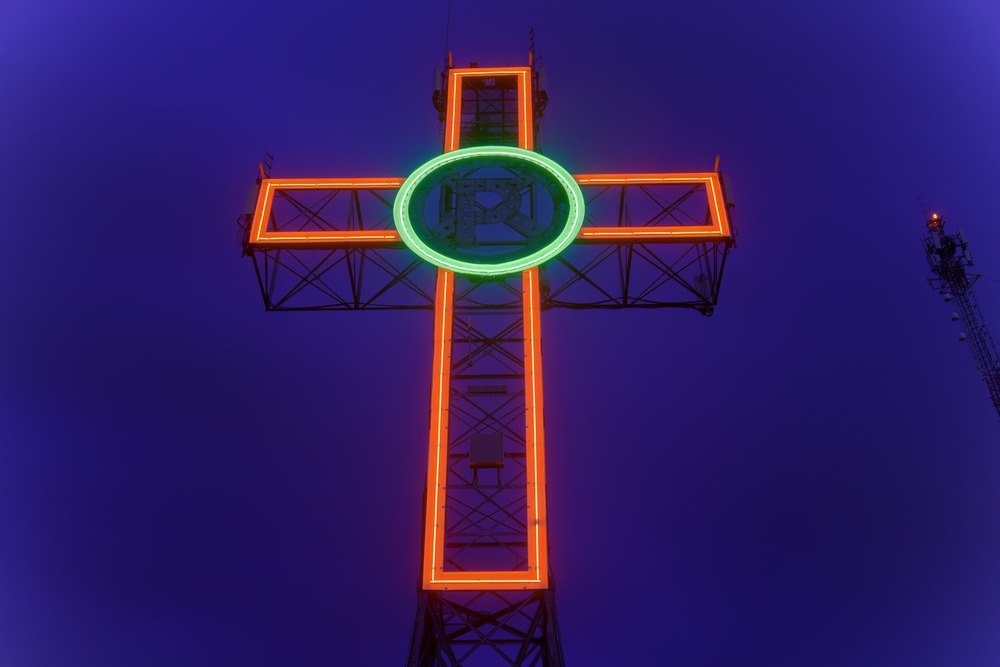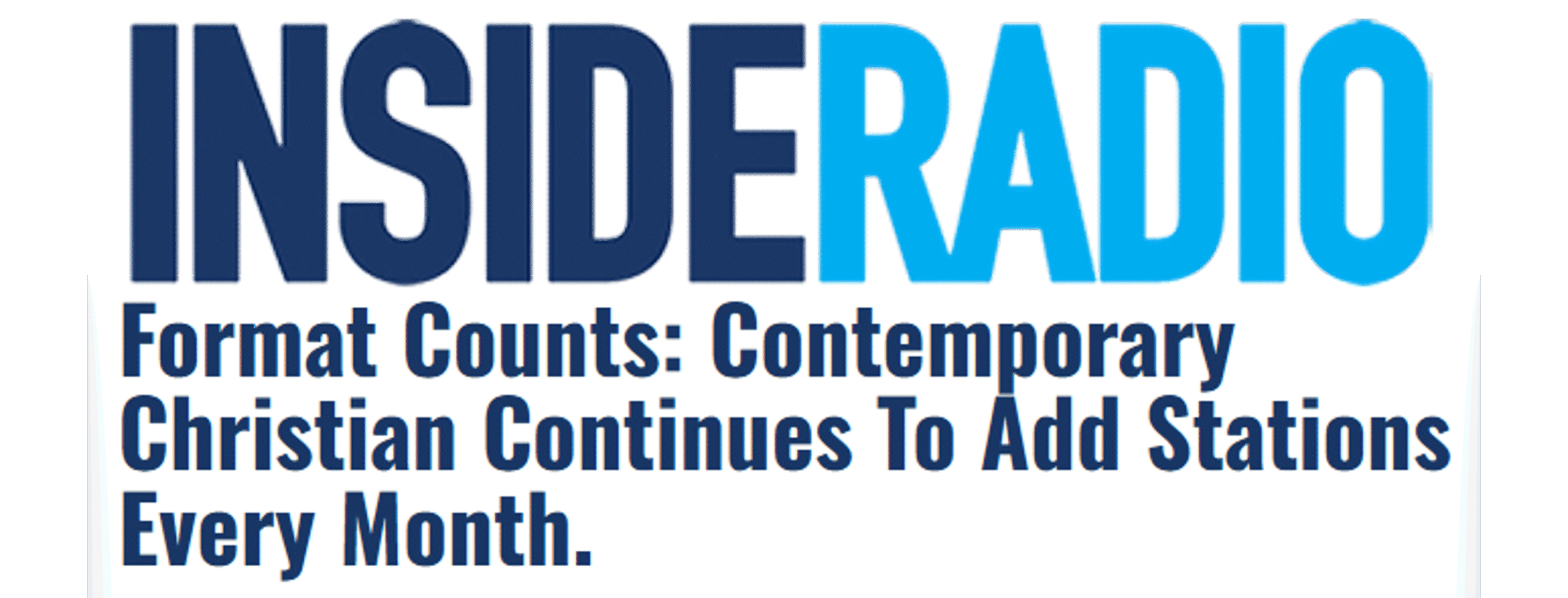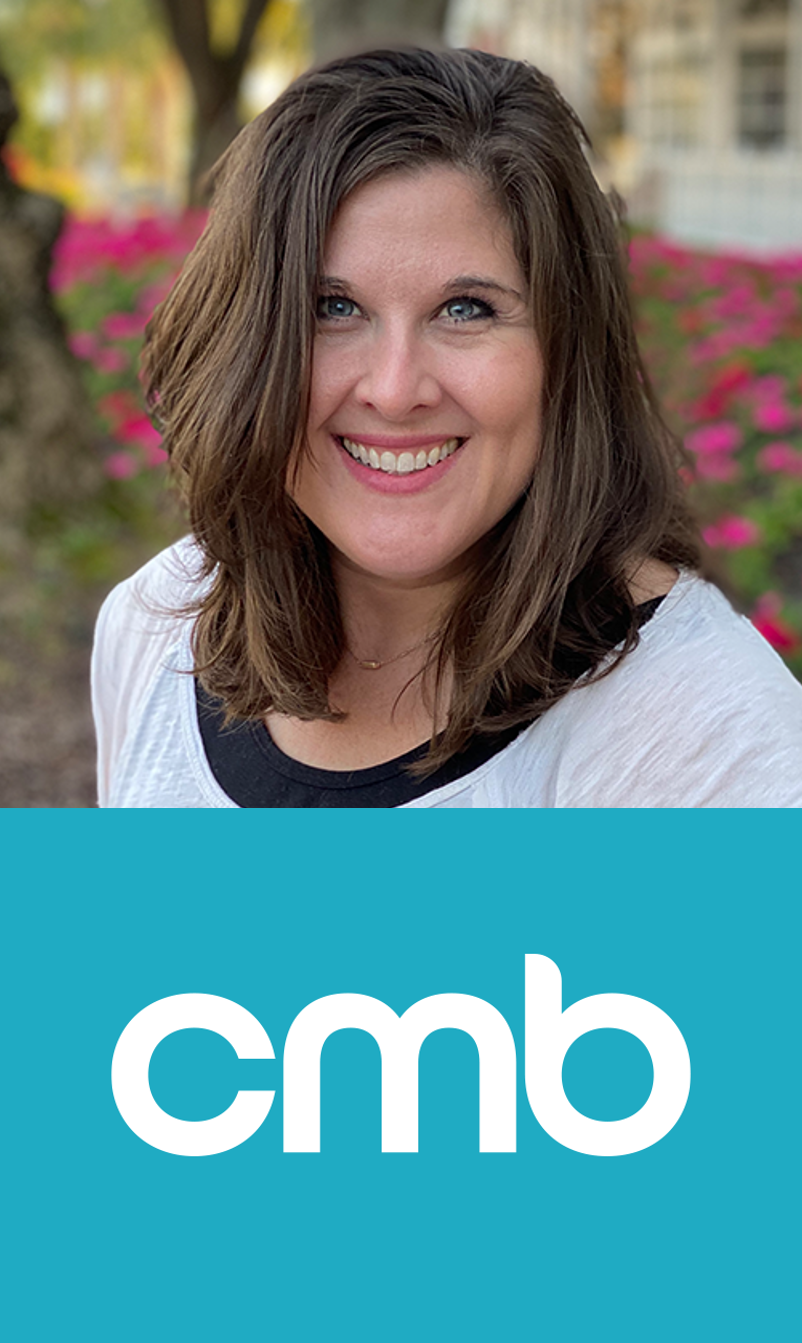
One of the questions I get asked more and more these days is, “Fred, what is going on in Christian radio?”
It’s a good question when you consider the bulk of radio station purchases during the past several years have featured Christian organizations and networks as the buyers.
Not only that, Christian formatted stations continue to grow in numbers. Inside Radio reports an additional 58 stations added year-over-year putting the format in a class by itself. It seems like with each passing year, the Christian format is making more headlines:

And as importantly, audiences are getting the message, especially in this post-pandemic era. Ratings of Christian stations continue to set records as stations attract not just more listeners, but more loyal listeners. The chart below is from Inside Radio’s “Format Scorecard” showing the unmistakable uptrending for the format.
![]()
We see it in our own data, too. A look at those all-important Net Promoter Scores speaks volumes about how Christian music radio increased its recommendation scores in synch with the COVID virus. We hear it in focus groups, too. Many people were looking to be uplifted during the darkest days of the pandemic. Many found salvation and derived hope from these broadcast radio stations, now available in virtually every community in the U.S.

How impressive is this 82 NPS rating? Consider the average Net Promoter Score for commercial radio is just 46, while it’s a 66 for public radio stations who participate in our various Techsurveys (and lower than in those “Trump Bump” days).
But there are just boxcar metrics—the big numbers we like to throw around in radio when something—a format, a band, a station, a show—is trending. Radio pros know you have to actually experience a phenomenon for yourself to truly grasp what’s going on.
Back in the day, that may have meant flying to New York City to hear Z100 in real time. Or getting your college buddy, Mac (now living in Seattle) to record a few hours of KISW so you could get a feel for what they were doing.
But since the Internet arrived, we can stream any station we like, and by using services like Mediabase or LuminateBDS, we can break the music down in exponential ways. As a result, there are many fewer mysteries in broadcast radio in 2025 than there were decades ago.

Michelle Younkman, Executive Director, CMB
Of course, it’s likely there’s a Contemporary Christian station in your market, so you can tune in any time you like to hear their personalities, their music, their imaging, and more importantly, their mission. Across the board, their quality is improving, so the chances of hearing a good example of what this format can do has become more commonplace and accessible to curious radio programmers throughout the U.S.
But if that’s your sole exposure to the world of Christian music radio, you may be missing the most intrinsic reason why it’s thriving—its spirit, energy, and optimism among those who work in the format.
I had the pleasure of seeing that on display first-hand last week at Momentum 25, clearly the state of the art in radio conferences—period. Produced by Christian Music Broadcasters and its Executive Director Michelle Younkman (pictured) and her enthusiastic, buttoned-up team, this show has to be experienced.

Photo credit: John Owens
I’ve been fortunate to present in a number of “Super Sessions” at NAB Shows over the years, their top sessions. And I can tell you Momentum is comparable in many ways, and perhaps even better in some. I felt like I was checking off a bucket list experience when I took the big stage Friday morning at Momentum in front of hundreds and hundreds of attendees. Unlike some, I was not fixated on crowd size. But Momentum’s audience is large, attentive, engaged, and greatly appreciative.
Jacobs Media has conducted Techsurveys for CMB for the past 11 years, but this was my first time at Momentum. For some reason, Paul has attended and presented at this event in past years. But last week, it was finally my turn to show off a new study—On Air Pulse—to Christian managers, talent, and members of their music community. On Air Pulse was inspired by the AQ studies Jacobs Media has conducted in collaboration with Morning Show Boot Camp, a look at talent on the broadcast airwaves—how they think and feel about their careers and the stations and companies that employ them.
In tomorrow’s post, I’ll give you a rundown of what this study showed vis-à-vis our AQ research. The contrasts are striking and telling. As I presented the key points of the On Air Pulse research on Momentum’s main stage,  I experienced an inspirational lift at a radio conference for the first time in years. With few exceptions, events aimed at content creators—have slowly but surely withered away in recent years over the last decade or so.
I experienced an inspirational lift at a radio conference for the first time in years. With few exceptions, events aimed at content creators—have slowly but surely withered away in recent years over the last decade or so.
For the longest time, the Radio & Records Convention in the Erica Farber era (usually in L.A.) was the preferred event built around those responsible for programming radio stations. For years, Jacobs Media produced our Summits as adjunct sessions to that event. But when R&R went out of business, Joel Denver’s All Access Audio Summit stepped into the fray. Sadly, two years ago, it faded out, too, when All Access ran into financial pressures. Same with the Conclave. When the Radio Show also was phased out of the NAB’s annual event program, that essentially put an end to broadcast radio conferences with an emphasis on programming.
 With the exception of the Country Radio Seminar, the Public Media Content Collective conference, and Morning Show Boot Camp where each specializes in a format or platform, there is no longer a multi-format content conference for radio programmers on the commercial airwaves here in the U.S. I’m not suggesting a cause-and-effect necessarily, but the lack of radio programming gatherings seems to coincide with the slippage of overall quality exhibited by broadcast radio.
With the exception of the Country Radio Seminar, the Public Media Content Collective conference, and Morning Show Boot Camp where each specializes in a format or platform, there is no longer a multi-format content conference for radio programmers on the commercial airwaves here in the U.S. I’m not suggesting a cause-and-effect necessarily, but the lack of radio programming gatherings seems to coincide with the slippage of overall quality exhibited by broadcast radio.
Why did the some of the aforementioned conferences end up calling it quits? While economic pressures along with the COVID pandemic hastened the demise of some of these events, the fact is not enough companies were willing to allow their programmers, air talent, and producers to attend. The age-old excuse, of course, is expense, along with the wrong-headed concern that attendees would simply network their way to better jobs at these conferences or give away proprietary company secrets.
Looking out at a crowded room of hundreds of programmers and content decision-makers at Momentum, the contrast between this impressive event and what we’ve become accustomed to in commercial radio was obvious—and sad. Somehow, these Christian organizations and companies are making it a priority to invest in their people, their stations, and their missions. They expect their programmers to attend Momentum, hoping they returned to their jobs yesterday fired up and ready to put some newly learned ideas into action. Rather than be concerned about losing people or ideas to other players, these Christian broadcasters appreciate the collegiality and networking that is very much on display at Momentum.
View this post on Instagram
Did I mention the role music plays at Momentum? Attendees are excited to see and hear the artists they feature on their airwaves. Unlike other sectors in our business where the relationship between radio and the music biz has broken down and become contentious and counterproductive, at Momentum, it’s a celebration.
In between sessions like mine were brief but impactful music showcases from some of the format’s core and upcoming artists. And uniformly, the musicians in attendance celebrate their association with Christian music radio. They are “user-friendly” and accessible, and share their gratitude with the people who expose their music on the broadcast radio airwaves.
If you’re in commercial or public radio, you simply can’t listen to a local or Christian network outlet or look up their music on a monitoring service to get a feel for why so many things are going right for these stations while the rest of the industry is struggling or plateauing. There’s a vibe, an electricity, a spirit that you have to see, feel, and yes, witness for yourself in order to appreciate the differences.
Tomorrow, I’ll give you a tour of this new On Air Pulse study, conducted among Christian Music Radio air talent. And where apropos, I will contrast this data with what we’ve been seeing in the world of commercial radio hosts since 2018 in our AQ studies.
I’m bringing the fireworks.
Originally published by Jacobs Media








